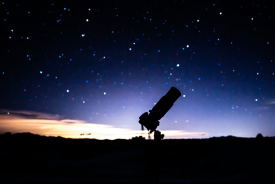Blu-ray Disks as Solar Panels? Scientists Say They Are a Cheaper and More Efficient Alternative
ByResearchers have used recycled Blu-ray disks as a low-cost way to enhance the use of solar panels because they help them absorb light.
According to LiveScience, authors of a new study in the journal Nature Communications found that the disks have tiny pits that are also a key component in solar cells. Previous studies have discovered that these microscopic structures improve solar panels' efficiency by absorbing and spreading light particles.
For their study, study co-author Jiaxing Huang, a chemist and an associated professor at Northwestern University, and his colleagues rummaged through a Blu-ray bargain bin at a local retailer.
"We had a hunch that Blu-ray discs might work for improving solar cells, and, to our delight, we found the existing patterns are already very good," he said in a press release. "It's as if electrical engineers and computer scientists developing the Blu-ray technology have been subconsciously doing our jobs, too."
The researchers believe Blu-ray disks have patterns that encourage efficient light particle dispersion, though they normally would be the reason for their enhanced visual quality. With some of the more irrelevant movie titles winding up on the clearance racks, the researchers say Blu-ray disks are an ideal alternative to traditional solar panels.
"We found a random pattern or texture does work better than no pattern, but a Blu-ray disc pattern is best of all," Huang said in the release. "Then I wondered, why did it work? If you don't understand why, it's not good science."
For their study, they say they used a copy of "Police Story 3: Supercop," and that the disk increased light absorption by 22 percent.
"Picking Police Story 3 was somewhat serendipitous," Huang told the Verge. "My student, Alex Smith, found it among a few other movies on sale at BestBuy, so he bought a number of copies."
© 2026 University Herald, All rights reserved. Do not reproduce without permission.








